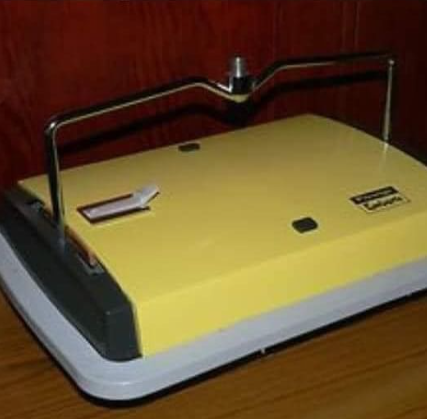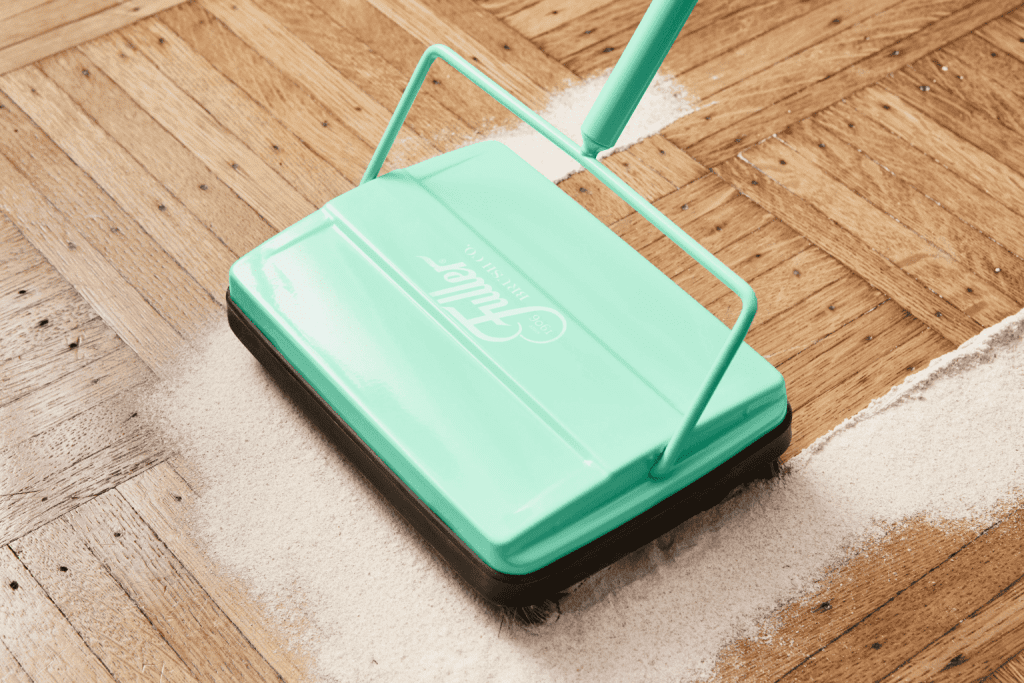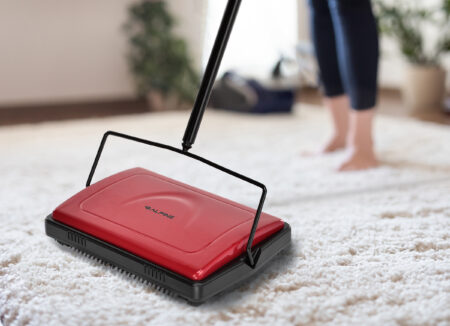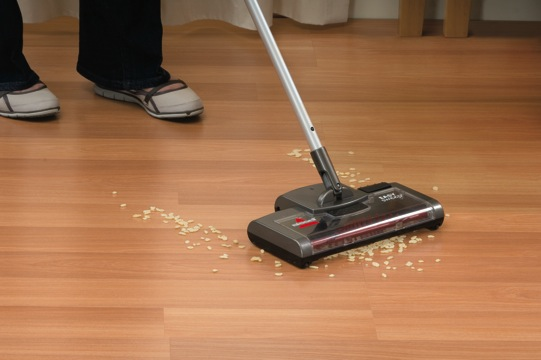The carpet sweeper, a simple yet revolutionary device, has a fascinating history that dates back to the 19th century. Before the invention of this cleaning tool, homes with carpets faced a significant challenge—how to keep them clean without modern vacuum cleaners. This article delves into the origins of the carpet sweeper, its inventor, and how this device changed household cleaning forever.

The Early Days of Carpet Cleaning: From Brooms to Beaters
Before the industrial revolution, most homes featured wooden or stone floors that were relatively easy to clean with brooms. But as carpets and rugs became more affordable and common, cleaning them posed a new challenge. The traditional method of cleaning carpets involved hanging them outside and beating them with carpet beaters—a labor-intensive and ineffective solution.
The Need for a New Solution
Carpets were quickly gaining popularity in households across Europe and America in the 19th century. As more people added carpets to their homes, there was an increasing need for a better, more efficient way to keep them clean. The carpet beater, while useful, was not ideal. It required strength, patience, and often resulted in clouds of dust.
This need for a practical solution set the stage for the invention of the carpet sweeper, a device that would transform how people maintained their carpets.
The Birth of the Carpet Sweeper: Melville R. Bissell’s Invention
The invention of the carpet sweeper is credited to Melville R. Bissell, a businessman from Grand Rapids, Michigan, in 1876. Bissell, along with his wife Anna, operated a small crockery shop, which constantly faced the problem of sawdust embedding into the carpeted floors—a byproduct of unpacking fragile merchandise.
Melville’s Ingenious Solution
Anna Bissell found it extremely frustrating to clean sawdust from the carpets with a regular broom, as the tiny particles became deeply embedded in the fabric. Determined to solve his wife’s problem, Melville Bissell set out to create a more effective cleaning tool. He designed a mechanical device that consisted of a wooden box with rotating brushes inside, driven by wheels that moved when the sweeper was pushed along the carpet.
This innovative design allowed the brushes to sweep debris into a container, which could be emptied when full. It was a significant improvement over traditional cleaning methods, as it made carpet cleaning easier, quicker, and more efficient. Melville called his invention the “Grand Rapids,” after his hometown.
How the Carpet Sweeper Works: A Simple Mechanism
The original carpet sweeper was a mechanical device that worked without electricity. It comprised a box-like structure with the following components:
- Wheels: When pushed, the wheels turn the brushes inside the sweeper.
- Brushes: The rotating brushes sweep debris and dirt from the carpet’s surface.
- Handle: A long handle allows users to push the device across the floor.
- Dustpan: The dirt is collected in a small container or dustpan inside the device, which can be easily emptied.

The carpet sweeper was designed to be lightweight, easy to operate, and suitable for both smooth and uneven surfaces. It quickly became popular in homes across America.
The Bissell Company: From Small Beginnings to Global Success
Seeing the potential of his invention, Melville patented the carpet sweeper in 1876. The Bissells started small, assembling the sweepers above their crockery shop. Local women made the brushes, while Melville and Anna worked on assembling and selling the sweepers.
Door-to-Door Sales and Rapid Growth
The Bissells’ marketing approach was simple yet effective—they loaded a buggy with carpet sweepers and went door-to-door selling them. Melville took one side of the street while Anna took the other. The carpet sweeper’s efficiency soon spread by word of mouth, leading to increased demand.
Despite competitors trying to create their own versions of the sweeper, Bissell’s design remained the preferred choice due to its lightweight build, ease of use, and dust containment. In 1883, the couple opened their first manufacturing plant in Grand Rapids, establishing BISSELL, a company that would become a global leader in cleaning products.
Anna Bissell: The First Female CEO in the U.S.
Melville Bissell passed away in 1889, leaving the growing business in the hands of his wife, Anna. Anna Bissell, determined to continue her husband’s legacy, became the first female corporate CEO in the United States—a notable achievement in the male-dominated business world of the 19th century.

Anna’s Role in Expanding the Business
Anna Bissell proved to be a skilled businesswoman. She protected the company’s patents, expanded the product line, and increased production to meet international demand. Under her leadership, BISSELL grew into a household name and became synonymous with carpet sweepers.
Her commitment to quality and innovation ensured that the company remained at the forefront of the cleaning industry. Anna led the company until her death in 1934 at the age of 87, leaving behind a legacy of entrepreneurship and determination.
BISSELL’s Innovations: From Sweepers to Modern Cleaners
BISSELL continued to innovate after the success of the original carpet sweeper. In the 1960s, the company introduced the Gemini Sweeper, a two-brush design that improved cleaning efficiency. The 1980s saw the development of the Big Green Clean Machine, the first deep cleaner that no longer required a water connection, making it more versatile for home use.
Today, BISSELL remains a leading brand in the cleaning industry, offering a wide range of products, including vacuum cleaners, carpet cleaners, and steam mops. The company’s continued success is a testament to the enduring value of Melville R. Bissell’s original invention.
The Carpet Sweeper’s Legacy and Continued Use
Although the carpet sweeper has largely been replaced by modern vacuum cleaners, it still has a place in homes, hotels, and offices where quiet cleaning is required or where electricity may not be readily available. The carpet sweeper remains a reliable, eco-friendly option for quick cleanups.
Why Carpet Sweepers Are Still Relevant
- Silent Operation: Unlike noisy vacuums, carpet sweepers operate quietly, making them ideal for environments where noise is a concern.
- No Electricity Needed: As a purely mechanical device, the sweeper can be used in places without power.
- Lightweight and Easy to Use: Its simple design makes it a practical choice for those who want to avoid the weight and bulk of a traditional vacuum.

Conclusion: An Invention That Changed Household Cleaning
The carpet sweeper, invented by Melville R. Bissell in 1876, revolutionized the way people cleaned carpets. It marked the beginning of more efficient household cleaning tools, paving the way for the development of modern vacuum cleaners. The Bissells’ dedication and innovation not only improved domestic life but also established a successful business that continues to thrive today.
From Anna Bissell’s trailblazing role as the first female CEO to the enduring relevance of the carpet sweeper itself, this invention remains a symbol of ingenuity and practicality in the world of cleaning solutions.


